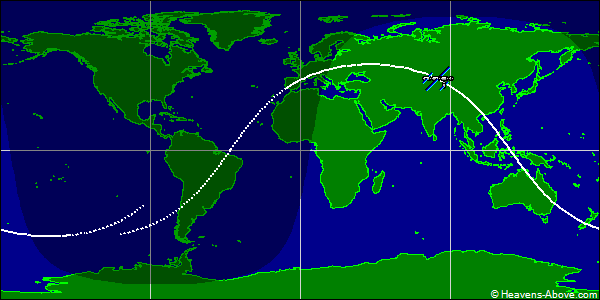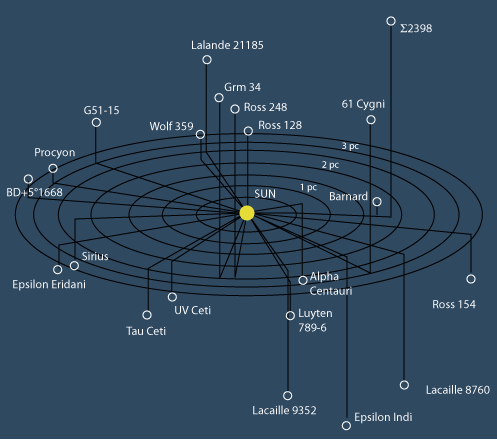 |
Star Chart for San Sebastian |  |
|
|
|
| Sun/Moon Data for San Sebastian: | |||
Sunspot Activity
|
Sunset: 17:50 Sunrise: 07:20 DIY Sunspot Viewer |
|
31% illuminated - Waxing Crescent Moon Moonrise: 13:09 (01/01/1970) New Moon: 20/11/2025 07:48 Full Moon: 05/11/2025 14:20 |
|
Graph courtesy: Newquay Weather |
Space Wx |
| Color Key |
| Worse | Better | Best | Sky (including Wind) | ||||||||||
| Worse | Best | Worse | Ground |
Space Track-Satellite Passes
International Space Station View Look Angles
Notes about viewing ESVs:
When using lookangles, choose passes with high magnitudes; less than 6.0. ("Looks" are local time.)
Best viewing is when ESV is in Earth's penumbra; on the map, it's the solid line during night.
Dotted line on map denotes ESV is dark, in Earth's umbra (shadow).
Objects in orbit have to maintain a speed of at least 17,500mph, therefore ESVs traverse the sky noticeably different than aircraft.
ESVs appearing to blink are either tumbling rocket bodies, or spinning payloads with deployed solar arrays.
High-Eccentricity objects have a more ellongated orbit. Ground trace looks like a backwards C.
Regression-Ground traces will move West with each orbit due to Earth's rotation.


